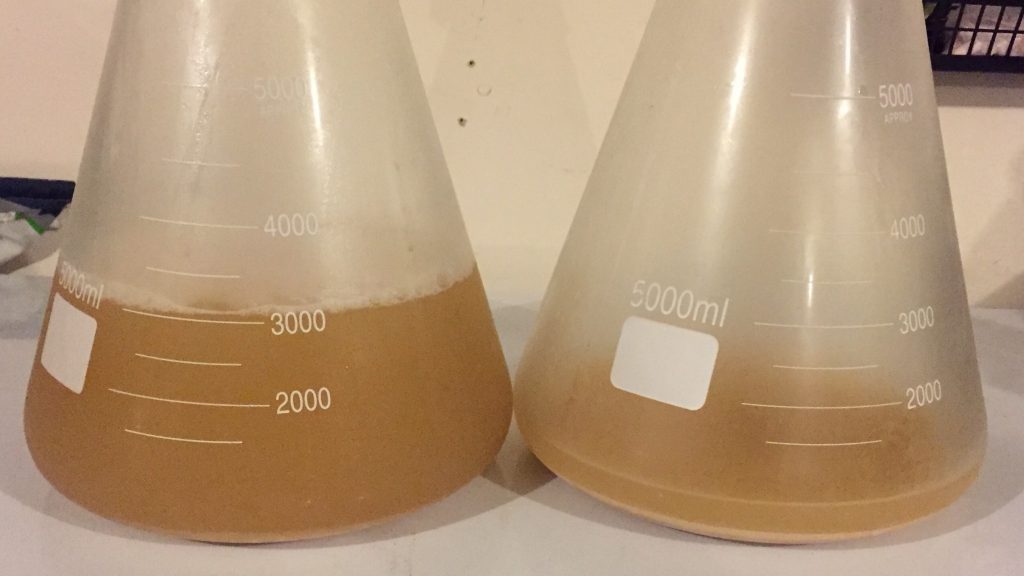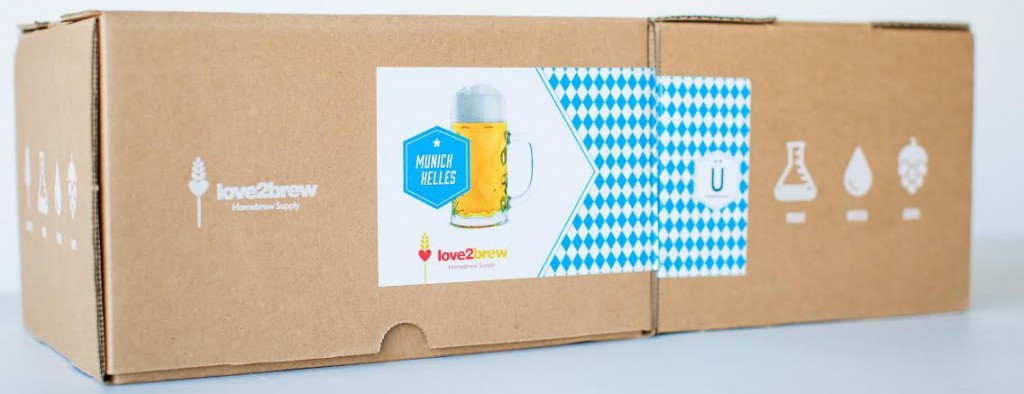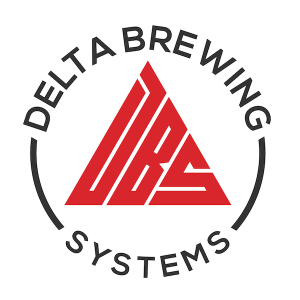Author: Marshall Schott
Over the last few years, it’s become commonplace for homebrewers to propagate yeast in a starter to ensure a viable pitch, a simple process consisting of fermenting a relatively small amount of wort, usually made from extract, which is then used to ferment an actual batch of beer. Starters for standard 5 gallon batches of moderate OG ale are often small enough that most would contend pitching the entire volume has an unnoticeable impact on the flavor of the finished beer. However, there are times larger starters are recommended by pitch rate calculators, such as for lagers or higher OG beer, resulting in a greater volume of liquid sitting atop the creamy yeast cake. What to do with this supernatant has become yet another issue of debate in brewing circles with some swearing any off-flavors present will be metabolized during fermentation while others decant out of fear of imparting undesirable flavors.
I first ran into this issue years ago when making a cool fermented lager that called for a 2.8 liter starter, which I calculated as being approximately 14% the volume of the wort I’d be pitching it into. This seemed like a lot to me, certainly more than I was comfortable adding without evidence suggesting it wouldn’t matter, and unfortunately my search for solutions yielded conflicting results. Eventually, likely inspired by something I read or heard somewhere else, I adopted the heuristic I still use today– decant any starter that’s over 5% the volume of the beer, which is simple enough to remember since 5% of 5.25 gallons is almost exactly 1 liter.
Indeed, this rule of thumb has served me well, I’ve pitched hundreds of batches with 1 liter starters that have come out fine. It wasn’t until after being asked about the necessity of decanting larger starters that I realized I’d been engaging in an arguably more complicated process based on nothing more than a hunch with perhaps a sprinkle of an appeal to authority. Truth is, the decanting process does add a few steps that I’d be happy to forgo if I knew it wouldn’t screw up my beer. And I’ll admit, I still cringe a little when decanting starters knowing the supernatant contains millions of healthy yeast cells ready to turn my wort to beer. With this in mind, I was finally inspired to test it out for myself!
| PURPOSE |
To evaluate the differences between two beers of the same recipe fermented with either a decanted or full starter.
| METHODS |
In an effort to ensure any differences caused by the variable were well expressed, I thought it only prudent the beer not be so characterful as to hide any effect, hence I opted to make my Munich Helles, the kits of which were graciously provided the great folks at Love2Brew.com.
For this batch, rather than using the yeast I first brewed it with, WLP029 German Ale/Kölsch, I went with Saflager W-34/70, a new favorite due to its ability to produce clean lager character even when fermented at ale temperatures.
While it’s commonly said dry yeasts don’t need to be propagated in a starter, I did exactly that 3 days before brewing, making a single large starter from 1 pack of yeast in order to keep things as similar as possible between each batch.
When brew day arrived, my neighbor Tim milled the grain while the mash water was being heated to the proper strike temperature.
Once the strike water was ready, I transferred it to my cooler MLT for a brief pre-heat before stirring in the grist, the temperature settling in precisely where I wanted it to be.

About 10 minutes into the mash, I pulled off a small sample to make sure the pH was where I preferred for this beer. On the nose!
Following the 60 minutes saccharification rest, I collected the first runnings, added in the batch sparge addition of water, and gave it a good stir before running off the rest of the sweet wort.

As the wort was coming to a boil, I split the single 3.4 liter starter into another flask, swirling it vigorously before doing so to ensure homogeneity. These equal sized starters were then placed in a 32˚F/0˚C freezer where they were left to cold crash for the remainder of the brew day.
The wort was boiled for 60 minutes with hops added at the times stated in the recipe.

Af the conclusion of the boil, I rapidly chilled the wort to 78˚F/26˚C, just a few degrees warmer than my summer groundwater temperature.

I then transferred equal amounts of the chilled wort to separate fermentors, stirring occasionally throughout to make sure similar amounts of kettle trub made to each one.

The fermentors were placed in my cool chamber where they sat for 5 hours before stabalizing at my target fermentation temperature of 66˚F/19˚C. A this point, I took the flasks of yeast that had been crashing in the freezer for nearly 8 hours and very gently decanted one into the other, leaving behind the slurry and enough supernatant to facilitate easy pitching.

By my observation, the full starter was approximately 2600 mL larger than the decanted starter, presumably enough to produce a difference if indeed there was going to be one. I let the starters sit in my warm garage for about 30 minutes to warm up a bit before pitching to avoid shocking the yeast. I returned 10 hours later and observed the airlocks on both batches bubbling like made, which is far quicker than when I’ve pitched rehydrated dry yeast. As far as I could tell, both beers fermented similarly and showed a demonstrable decrease in activity at 5 days in. I raised the chamber temperature to 70˚F/21˚C and left the beers alone for another 5 days before taking a hydrometer reading to check if FG had been reached.

While a potential result of the variable, I view a 0.001 SG difference is within the margin of error. With all signs of fermentation gone, I cold crashed, fined with gelatin, then kegged the beers.
The full kegs were burst carbonated for 15 hours before being reduced to serving pressure. When it came time to collect data the following weekend, both beers were clear and carbonated.

| RESULTS |
In all, 20 people of varying experience levels participated in this xBmt. Each participant was served 2 samples of the full starter beer and 1 sample of the decanted starter beer then asked to identify the sample that was unique. Given the sample size, 11 tasters (p<0.05) would have had to correctly identify the decanted starter sample as being different in order to reach statistical significance. A total of 8 tasters (p=0.34) accurately identified the unique sample, indicating panelists were unable to reliably distinguish a beer fermented with a 3.1 liter starter from the same beer fermented with a 300 mL starter.
My Impressions: In multiple attempts over multiple days, I was unable to tell these beers apart, despite my slight bias against pitching starters over 1 liter and knowledge of the variable. Both tasted like the non-traditional, heretical Helles I first fermented with WLP029, though they required even less time being fermented at ale temperature with W-34/70.
| DISCUSSION |
As I trust anyone who has been at this hobby for awhile can attest, there are times we get lazy and/or forgetful, if you know what I mean, which can lead to the making of mistakes. I’ll admit I’ve pitched starters that were over the 1 liter mark on more than one occasion, often regretting my decision to do so the following morning, though failing to notice any real detriment in the finished beer. Still, I wasn’t convinced differences in starter volume had no qualitative impact and was surprised not only that participants were unable to reliably distinguish the beers in this xBmt, but that I couldn’t either. I’ve tasted supernatant before, it’s pretty gross, yet none of the esters and oxidation flavors I usually detect in it were at all present in the finished beer.
The methods we use allow us to test whether certain variables produce a perceptible effect, though limit our ability to provide reasons for what’s going on. Relying on speculation I’ve read from others, one might presume the flavors and aromas produced during the starter process are in some way metabolized when the yeast is reactivated during primary fermentation. It seems to make sense given what we know about fermentation in general, though until there’s more evidence, I’m quite content to answer “I don’t know.”
If you have any thoughts about this xBmt, please do not hesitate to share in the comments section below!
New Brülosophy Merch Available Now!
Follow Brülosophy on:
FACEBOOK | TWITTER | INSTAGRAM
If you enjoy this stuff and feel compelled to support Brulosophy.com, please check out the Support page for details on how you can very easily do so. Thanks!

















59 thoughts on “exBEERiment | Decanted vs. Full Yeast Starter In A Munich Helles”
I’m actually not that surprised by this one. I usually decant my starters but I’ve never thought it was necessary due to off-flavors. If anything, it’s because I make extra for later use and not decanting would cause some storage issues because store my yeast in .5 liter gatorade bottles.
Is it possible that the lower finishing gravity on the non-decanted starter beer was because the starter wort actually diluted the beer? Even if there is no flavor difference, thinning out the beer with weaker starter wort might be reason enough to decant.
Seems possible to me.
“… it’s become commonplace for homebrewers to propagate yeast in a starter […] a simple process consisting of fermenting a relatively small amount of wort, usually made from extract …”
Or make the starter in some wort left over form the last batch and save some money.
Then one would have to keep some wort from the last batch uncontaminated. Given that I only brew once month at most, I’d be suspect of anything less. than pressure canning the old wort.
Freeze it
Thaw
Boil
Cool
Pitch.
I do not think there should be much concern for contamination, as long as you store the wort in a clean jar. I froze my collected wort. You will boil the wort for about 10 minutes, which should kill any contamination. Then cool it down and pitch the yeast.
Wouldn’t this result in starter wort that may be too high gravity, of varying nutritional content based on the make up of the last bacth, and unless you take the wort pre-hop additiions, this might result in hopped starters?
Just dilute with water if the gravity is too high.
A hopped starter presents no issue; in fact … some suggest adding hop to the starter for its anti-bacterial properties.
Maybe more interesting to me, is the fact that one batch was fermented with a lower cell count than the other, yet were indistinguishable from one another. 34/70 is such an awesome yeast.
Perhaps I’m misunderstanding the variables at play here, but I was under the impression that both beers received very similar cell count pitches and that the only difference was that one was decanted while the other was full volume.
I believe he is referring to the fact that the full volume starter had yeast in suspension, and thus had a larger overall cell count.
This is one thing I’ve done with simple ale starters under 2 L. It’s so much easier to just pull it off the stir plate harvest half a liter in a mason jar and pitch the rest. I figured the yeast will scrub out off flavors from under a liter of oxygenated starter beer. I’ve found that I leave too much good yeast behind in the flask and the sink when decanting.
Running a series of experiments where you remove one part at a time from a car will probably also lead to no statistically significant difference in driving across those experiments. But try combining all those missing parts, and I think you’ll have trouble. How about an exbeeriment where you combine half a dozen of your best-practises shortcuts?
Google Short & Shoddy…
I wonder how this would affect hoppy wort, very dark wort, high gravity wort, etc.
Me too.
Love 34/70 my favorite lager yeast. I currently make almost all styles of lager with this yeast. It is so nice to just set the chamber to 62 F, and not worry about it. One thing you usually provide information on from your xbrmts is; which sample did the tasters prefer. For me this is important information.
Since it wasn’t significant, that data isn’t reliable. Either way, it was split, predictably.
I’d like to see this experiment without the full starter being chilled at all. I pitch mine right off the stir plate and get such fast vigorous fermentations, I have stuck with it. Never notice any off flavors either
I can’t see why it’d make any difference? Even though the article doesn’t state it, I’m sure the chilled starters were given some vigorous swirling before pitching to ensure homogeneity. If you’re happy to pitch the full starter then there’s no need to chill first.
Completely agree. The only benefit to not cooling the starter is that the yeast hit the wort fully awake and ready to work leading to a slightly shorter lag time before vigorous fermentation.
Since the cell counts would be the same, and the only difference would be lag time, I highly doubt there’d be any differences in the resultant beers.
I hardly ever decant (because of laziness mostly) and even if I do, I decant less than 50% of the total volume because I’m more concerned about getting a healthy pitch. When I don’t decant, most times I’m also pitching at high krausen and not crashing the yeast at all.
I’m not surprised that the tasting panel didn’t find a significant difference while the beer is young. I would be interested to see the tasting repeated in 4-6 weeks. Would pitching a highly oxidized starter wort give premature oxidation off flavors before the decanted beer?
Well, I finished data collection on this 2 weeks ago, just took another 3 “blind” triangle tests about 10 minutes ago (because of this comment), and didn’t get a single one correct. Maybe it would change in another couple of weeks… but I don’t tend to hold onto beer that long.
Don’t you make a highly oxidized wort when you oxygenate the entire thing before pitching yeast so the yeast have oxygen available to do their thing? I’m not an expert, but my impression is oxygen after the beer has fermented is bad, not before, when the yeast can eat it up.
That’s my thinking too.
Was the starter made from extract or all-grain wort? I don’t think I’d feel confident pitching an extract starter as it might have an oxidized twang if it was old.
That aside, it seems a no-brainer to pitch the starter for the extra beer.
I guess the only possible criticism of this experiment is that the starter and the beer were fermented at basically the same temperature, so barring any differences in byproducts due to wort composition, the starter won’t contribute anything that wasn’t produced in the beer anyway. What this is saying to me is that you can’t tell that you diluted the Helles with 2.6L of beer made from DME. Which is still valuable information. I wonder if 2.6L of water would be noticeable (I assume so but who knows?)?
For what it’s worth, the starter was fermented in my laundry room, which is the warmest area of my house; we keep our AC at 76˚F, though it’s probably 2-4˚F warmer in the laundry room. Accounting for exothermic reaction, I’d guess the starter was fermented closer to 82˚F, or about 16˚F warmer than the beer.
Oh, that is more interesting. That’s around the temp where you could tell a difference between a warm fermented 34/70 and a cooler one. Nice.
Guess they just don’t secrete anything they can’t clean up given the chance (or that diluting brings things down below the threshold of detection).
Holy shit, right now we have to keep our furnace on to keep our house at 20C (Ontario).
The results of one xBmt comparing 34/70 fermented at 50F vs. 70F, tasters were unable to reliably distinguish the samples, hence my choice to ferment 34/70 at 66F almost exclusively now!
I understand the point of changing only one variable at a time, but when I saw the title of the experiment, I expected that the non-decanted starter would also not be cold crashed, just chilled down to pitching temperature, thus saving a step.
I agree. I always pitch full starters at the high krausen stage, where I expect the yeast to be in its most active phase. When you cold crash, you get dormant yeast instead.
You could blend beer with supernatant fluid in equivalent proportions to test wether blending simply hides the icky.
For each exbeeriment, you burst carb and then say you reduced to serving pressure. I assume your serving pressure is not constant depending on style. Can you begin to add the specific serving pressure for batches?
I carbonate my beers to the desired level then serve them all at 12 psi.
Would there be an appreciable difference in IBU? Seems like adding 10% of a volume of non-hopped wort would mess with anticipated bitterness levels, no?
If there was, it wasn’t reliable distinguishable.
A Saflager W-34/70-related question that someone might be able to chime in on?
Persuaded by the Brülosophy 34/70-craze, I decided to give the method a go for the first time. Pitched 1 rehydrated pack in a 5 gal, OG 50-ish batch. I set the temp to 66˚F/19˚C late night and it was fermenting lika a rocket the next morning. Checked on it 24h in (by opening the ferm fridge door) and everything seemed fine. The smell was the usual fermenting beer smell. Checked on it today 48 h in and its still fermenting, but the sulfur smell is really pungent. Is this something to be expected (after all its a lager yeast) or do I have a problem down the road? I usually adhere to the RDWHAHB-philosophy, but noticed that the smell (or lack of it) never gets mentioned in the lager exbeeriments.
This has consistently been my experience when fermenting with W-34/70 and my beers never come out tasting like sulfur.
Thx – glad to hear!
I understand for the last exbeeriment results and other blog entries you don’t use your the quick lager method and now simply ferment your lager like a ale yeast?
This beers in your opinion taste like a lager or somthing “similar” a lager that we can brew to save a lot of time.
thanks, I think soon it try myself
Yes!
loved this article! I don’t have time to crash my 1.5l starter so I’m dumping it in and this helped ease any worries 🙂
In one of the last pictures filling the kegs I see you use the liquid line to fill. Is this just using gravity or is it connected to a c02 tank? I want to start transferrig somewhat closed with my ss brewbucket but don’t want to take my tank out of my kegerator every time.
I absolutley enjoy reading all of your experiments! Thanks for the posts!
Just gravity. I’m planning an xBmt comparing CO2 purged keg with beer transferred via CO2 vs. this old non-purged method, stay tuned!
It seems that this experiment and the one to run a starter for 4 hours before pitching leads me to the idea that a starter is not necessary. Just run a liter of wort from your brew (at the correct temp) into the flask and spin it for 4 hours before pitching in the chilling and settling wort.
Saves time and money!
Why put starter in freezer before pitch?
I leave on stir plate at room temp 65-70F until pitch and always use full volume
Thanks for this; it’s so much more useful than other blog discussions on this topic.
I often use 10%+ starters so I’m sensitive to the concerns folks raise but not convinced. Normally I use the entire starter at about 30 hours, at the stage where the yeast growth has pretty well topped out but there is still significant activity. I formulate my main wort for additional gravity, hops and color, such that the wort after diluting with the starter is at or near my target for these key recipe items. I also adjust my OG as recorded after the starter is pitched.
Perhaps I’m missing something but on some blogs I read folks expressing concern about “sour, oxidized starter wort” and wonder how this is a concern. Of course if their wort is truly sour, they have bigger problems, as their starter is contaminating the entire batch. As to being oxidized, we use a stir plate to try to keep the oxygen level high because the yeast is consuming it so rapidly. There is doubtlessly some oxygen remaining at the end, but if we pitch at that point, we are pitching into wort that we have tried hard to oxygenate to the greatest extent we can, so where is the harm if there is residual oxygen in the starter wort?
If I am missing something here, I’d appreciate other thoughts.
As for the sour comments, I think that’s largely a function of most starters lacking hops while being low OG, so it’s just super dry with no other flavors. Oxidation in a starter isn’t really an issue since that yeast is going to kick back into action as soon as it hits the wort, meaning any residual O2 will be metabolized by the yeast.
This is exactly what I was looking for… I didn’t have the time to cold crash my starter and decant. I’ve pitched the whole thing before but it’s been a while and I couldn’t remember much about the result of that Brew.
I realize that this has been posted for a while but this topic recently came up on the Homebrewing FB forum. I was doing some research and was glad to see you have done this one. I have a comment/question or two. But first, thanks for all of your exbeeriments. They are very enlightening.
I look at this result from another point of view, that decanting is OK and the pitch is still going to be more than enough. I have typically crashed and decanted.starters. Having tasted the starter beer my stance was that I never wanted it contaminating my good beer, not matter what the quantity.
I typically make and use home pressure canned wort from LDME for starters. Sometimes if time permits I sparge second or third runnings, essentially creating parti-gyle starters to can. I stop at about 1.010 and boil to reduce volume to get to a 1.040 gravity.
Decanting a stout based starter from a RIS to use for a Pilsner or Vienna is absolutely necessary in my mind (If don’t have an LDME quart). I was glad to see that you could not find a difference in the fermentation or the taste of the batch (except for the .001 FG difference).
I wondered if losing the yeast left in the supernatant would be a problem. Apparently it isn’t. In my own experience I usually pour this into a sterile container and let it crash for a couple more weeks. I then harvest the yeast from it. I can usually get enough to freeze or start another batch. It tends to be in good condition, fresh and vital.
Thanks again for all your work.
Cheers Marshall. Just to clarify, what percentage of the batch was the non-decanted 3.1L starter?
This was awhile ago, but seeing as I generally decant to bout 500 mL, that would have about approximately 2.5% the volume of the full batch… give or take.
Hmmmm?… a 3.1 litres starter at 2.5% would equal a 124 litre batch volume!?
I thought you asked about the DECANTED starter, so 3.1 liters minus the supernatant volume. The batch size for both was 5.5 gal, or 21 liters.
I may have confused the issue by using the term “non-decanted” instead of “full yeast starter”? 😉 Okay, so 14.76% of the batch using the 3.1 litre full yeast starter. Cheers Marshall.
Do dry yeasts need a starter given their lower price it is affordable to buy two packets? Also Fermentis now recommend to add their yeasts dry. Liquid yeasts would need a starter in many cases and I would decant.
Just here to say I sang the last sentence before clicking the link to Dave’s song. Nice touch! On to brewing the Porter and pitching the whole damn starter.